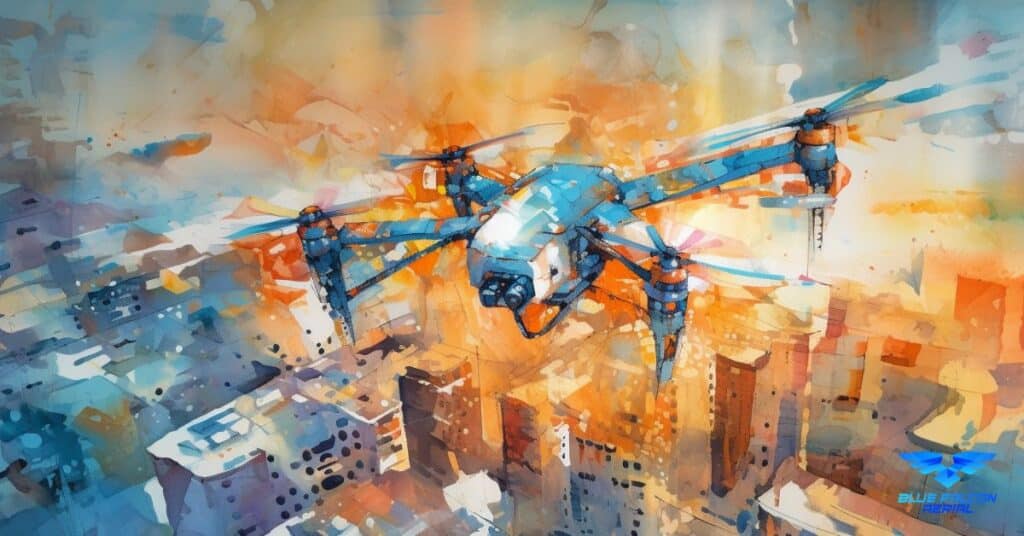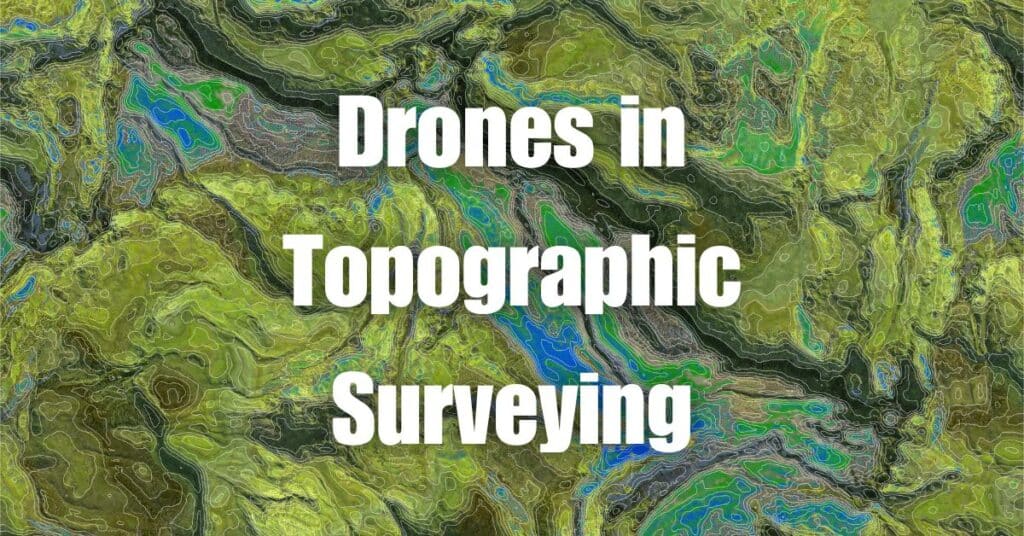The geospatial industry has seen significant advancements in recent years, with drone technology playing a pivotal role in revolutionizing data acquisition. One key area where drones have made a substantial impact is in the use of Drone-Based Ground Control Points (GCPs). In this article, we will answer crucial questions related to GCPs, such as their purpose, how they’re used in drone surveys, and the benefits of using drone-based GCPs. We will also explore the different types of ground control points, how to choose and implement them, and provide a comprehensive guide to maximizing accuracy for high-quality data.
What are Ground Control Points (GCPs)?
Ground Control Points (GCPs) are strategically placed markers on the earth’s surface that have known coordinates. These coordinates are used as reference points to align and georeference aerial or satellite imagery. GCPs play a crucial role in ensuring the accuracy and reliability of geospatial data.
Purpose of GCPs
GCPs are used for:
- Georeferencing: Aligning the collected aerial imagery with real-world coordinates to create an accurate representation of the landscape.
- Rectifying errors: Correcting distortions and inaccuracies in the images caused by factors such as camera tilt, lens distortion, and terrain elevation changes.
- Validating accuracy: Verifying the precision of the final geospatial product by comparing it with independently acquired ground control data.
Traditional Methods vs. Drone-Based GCPs
Traditional methods of collecting GCPs involve surveyors using GPS equipment to measure and record the coordinates of each point manually. This process can be time-consuming, labor-intensive, and prone to human error. Drone-based GCPs, on the other hand, enable surveyors to capture high-resolution aerial imagery and use sophisticated software to automatically extract and georeference GCPs. This method significantly reduces the time and effort required for data collection while maintaining or even improving the accuracy of the results.
Difference between GCPs and Checkpoints
While GCPs are used to georeference and correct aerial imagery, checkpoints serve as independent control points to validate the accuracy of the final geospatial product. Checkpoints are not used during the georeferencing process but are measured separately to provide a means of assessing the overall quality and precision of the map or model generated.
Benefits of Using Drone-Based GCPs
Implementing drone-based GCPs offers several advantages over traditional methods, making them an attractive option for a wide range of geospatial applications.
Increased Accuracy
Drones equipped with high-resolution cameras and advanced sensors capture detailed aerial imagery, enabling the extraction of precise GCPs. The use of drone-based GCPs results in higher accuracy geospatial products, reducing the likelihood of costly errors and rework.
Time and Cost Savings
Traditional GCP collection methods can be labor-intensive and time-consuming, with teams of surveyors spending days or even weeks in the field. Drones can cover large areas quickly and efficiently, significantly reducing the time required for data collection. This leads to lower labor costs and faster project completion.
Safety and Accessibility
Some terrain may be difficult, dangerous, or even impossible for surveyors to access on foot. Drones can easily capture data in remote or hazardous locations, ensuring the safety of the survey team while still obtaining the necessary information for accurate georeferencing.
Types of Ground Control Points
There are various types of ground control points that can be used in geospatial projects, depending on the specific requirements and goals. Understanding the differences between them is crucial for selecting the appropriate GCPs for your project.
Different Types of Control Points
Natural GCPs: These are distinctive, easily identifiable features in the landscape, such as road intersections, building corners, or rock outcrops. Natural GCPs are convenient when working in areas where artificial markers cannot be placed, but their accuracy can be limited due to changes in the environment over time.
Artificial GCPs: These are man-made markers specifically designed for geospatial projects. They can be temporary, such as painted targets or small flags, or permanent, like concrete survey monuments. Artificial GCPs offer greater accuracy than natural GCPs, as they can be precisely placed and measured.
Photogrammetric targets: These are specialized markers designed for aerial surveys, featuring a distinct pattern (usually a cross or checkerboard) that can be easily recognized by photogrammetric software. Photogrammetric targets offer high levels of accuracy and facilitate the automation of GCP extraction from aerial imagery.
Examples of Ground Control Points
- Survey monuments, such as brass or aluminum disks embedded in concrete
- High-visibility painted targets on flat surfaces
- Checkerboard mats or vinyl sheets placed on the ground
- Biodegradable targets for temporary use in environmentally sensitive areas
Choosing the Right Drone and Equipment
Selecting the appropriate drone and equipment for your project is essential to ensure the successful implementation of drone-based GCPs and the collection of high-quality data.
Factors to Consider
- Payload capacity: Ensure that the drone can carry the necessary sensors and cameras for capturing accurate GCPs.
- Flight endurance: Choose a drone with sufficient battery life to cover the required survey area without frequent recharging or battery swaps.
- GPS accuracy: Opt for a drone with a high-precision GPS receiver to improve the geolocation accuracy of the captured imagery.
- Camera resolution: A high-resolution camera will provide detailed imagery, enabling precise GCP extraction.
- Stability and reliability: Select a drone with a proven track record of stability and reliability in various environmental conditions.
Recommended Drones and Equipment for the Best Drone Ground Control Points
- Drones:
- DJI Phantom 4 RTK: A popular choice for aerial surveying, featuring a high-resolution camera and an integrated RTK module for improved GPS accuracy.
- senseFly eBee X: A fixed-wing drone with a long flight endurance and multiple payload options for different survey requirements.
- Cameras:
- Sony A7R series: High-resolution full-frame cameras suitable for aerial surveying when paired with a compatible drone.
- Hasselblad L1D-20c: A 20MP medium-format camera designed for use with the DJI Mavic 2 Pro drone, offering high-quality imagery.
- Accessories:
- RTK or PPK (Post-Processed Kinematic) modules: Improve GPS accuracy by using real-time or post-processed corrections from a base station.
- High-visibility GCP targets: Ensure easy identification of control points in the captured imagery.
Implementing Drone-Based GCPs
Successfully implementing drone-based GCPs requires careful planning and attention to detail. This section will guide you through the process of choosing, placing, and using GCPs in a drone survey.
How to Choose Ground Control Points
- Visibility: Select easily identifiable features or markers that can be recognized in the aerial imagery.
- Stability: Choose points that are stable and unlikely to shift or change over time.
- Distribution: Ensure that GCPs are distributed evenly across the survey area for accurate georeferencing.
- Accessibility: Make sure the GCPs can be safely accessed for field measurements.
How Many Ground Control Points Are Needed
The number of GCPs required depends on several factors, including:
- The size of the survey area
- The accuracy requirements of the project
- The terrain and landscape features
As a general rule, a minimum of four to five GCPs should be used for small survey areas. Larger projects may require more GCPs to maintain accuracy. It is essential to consult with a geospatial expert to determine the appropriate number of GCPs for your specific project.
How to Use Ground Control Points on a Drone Survey
- Placement: Distribute GCPs evenly across the survey area, ensuring they are visible in the aerial imagery.
- Measurement: Use survey-grade GPS equipment to accurately measure the coordinates of each GCP.
- Flight planning: Plan the drone flight path to ensure complete coverage of the survey area and capture multiple images of each GCP.
- Aerial data capture: Fly the drone according to the flight plan, capturing high-resolution imagery of the survey area and GCPs.
- Georeferencing: Process the captured imagery using photogrammetry software, inputting the measured GCP coordinates to align the images with real-world coordinates.
RTK vs. GCPs
Real-Time Kinematic (RTK) and GCPs are both used to improve the accuracy of geospatial data. RTK is a GPS correction technology that provides real-time positioning data with centimeter-level accuracy. While RTK can significantly improve the geolocation accuracy of aerial imagery, it is not a replacement for GCPs. Combining RTK with GCPs can provide the highest level of accuracy, especially in projects with demanding precision requirements.
Real-World Applications
Drone-based GCPs have proven their value in various industries and applications, enhancing the accuracy and efficiency of geospatial projects.
Case Studies
- Construction: A large-scale construction project used drone-based GCPs to monitor site progress and create accurate topographic maps for earthwork calculations. The use of drone-based GCPs resulted in significant time and cost savings compared to traditional survey methods.
- Agriculture: A precision agriculture company implemented drone-based GCPs to collect accurate elevation data for drainage and irrigation planning. The high-resolution data allowed the company to optimize water management and improve crop yields.
Industries That Benefit from Drone-Based GCPs
- Surveying and mapping: Drone-based GCPs enhance the accuracy of topographic maps, digital elevation models, and orthophoto mosaics.
- Mining: Accurate geospatial data is essential for mine planning, monitoring, and reclamation activities.
- Environmental management: Drone-based GCPs support habitat mapping, erosion monitoring, and wetland delineation projects.
- Infrastructure: High-quality geospatial data is vital for the planning, design, and maintenance of transportation, utilities, and other infrastructure assets.
In conclusion, using drone-based GCPs offers numerous benefits, including increased accuracy, time and cost savings, as well as improved safety and accessibility. Incorporating drone technology into your geospatial projects ensures that you receive the highest quality data possible. For more information on building and growing your drone business, visit Soaring High: A Comprehensive Guide to Building and Growing Your Drone Business and learn how to take your operations to new heights. If you require any drone services, don’t hesitate to contact Blue Falcon Aerial for expert assistance.




